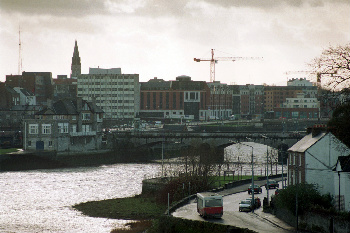Ambitious plans announced to rejuvenate Limerick retail landscape

GVA presents vision for the transformation of the city over 15 years
3 July 2013
Limerick City and County Council has launched its plan to transform the city’s economy and reinvigorate its city centre over the next 15 years. GVA, an independent commercial property advisor, designed the integrated economic and spatial plan which is the first of its kind in Ireland. The plan follows moved by the government to adopt a more joined-up approach to support wider local government reforms.
The €250 million plan, entitled ‘Limerick 2030 – An economic and spatial plan for Limerick’ was developed by GVA in conjunction with Aecom and Thinking Place. The plan was unveiled by Minister for Environment, Community and Local Government Phil Hogan, Finance Minister Michael Noonan and Minister of State for Housing and Planning Jan O’Sullivan.
GVA says the plan has the potential to create 12,000 new jobs and sets out the objectives which will change the infrastructure of the city centre and deliver a new vision for Limerick as a leading centre for commercial investment.
The plan contains three main elements; an economic strategy, a spatial strategy and a marketing plan. Some of the initiatives included in the plan are; supporting innovation; capitalising on the city’s three higher education institutions, ICT and digital assets and technology-based economy; the creation of ‘The Limerick Cultural Centre’; the transformation of the three main streets; the restoration of the Georgian Quarter and profiling the city as alive with energy while highlighting its industrial and historical heritage.
Gerry Hughes, senior director leading the project at GVA, commented: "This is a hugely exciting time for Limerick. It is a time of positive change – a new local government structure that unites the city, recognition by government of the city’s potential, and now an integrated economic and spatial plan to drive and guide investment."
Limerick 2030 will form part of the Limerick City and County Development plans and will be subject to public consultation. It’s part of a wider €750 million Limerick Project to deliver improved economic infrastructure over the next two decades.



 Print
Print








Fans 0
Followers